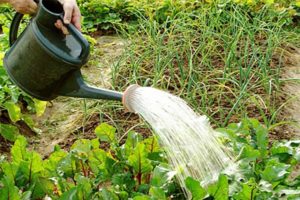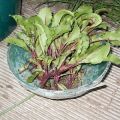How and how to feed beets for the growth of root crops and a good harvest with folk remedies
Any vegetable crop needs fertilization. They are necessary for normal growth, adaptation to environmental conditions and crop formation.
Content
- 1 Preparation of a site for beets and fertilization scheme
- 2 What do beets need and how to recognize starvation?
- 3 Root dressing for beets
- 4 Foliar dressing of beets
- 5 Watering beets with salt water
- 6 Beet feeding with boric acid
- 7 How to feed beets with chicken droppings
- 8 Beet feeding with potassium
- 9 Fertilize beets with nettles
- 10 Root fertilization of beets with folk remedies
Beets are no exception. The lack of nutrients negatively affects the quality and quantity of the crop. To get large, red and sweet roots, you need to know how to feed the beets, as well as how and when to do it right.
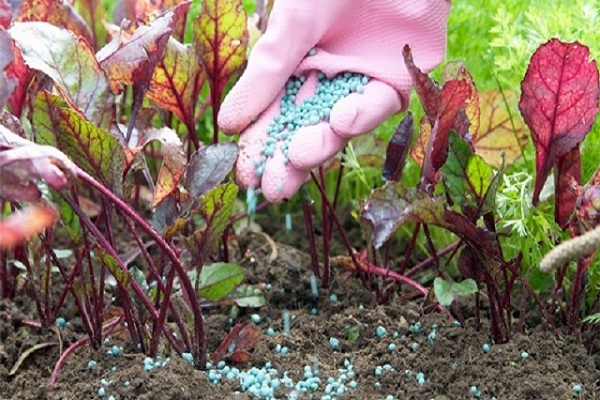
Preparation of a site for beets and fertilization scheme
For successful cultivation, soil planting beets should be loose, light and fertile. Cultivated peat bogs, chernozems, loamy soils - neutral or slightly alkaline - will pass. Since autumn, after harvesting the predecessor, organic fertilizers are added to the soil under deep autumn plowing: humus, compost.
4-5 kg of rotted mullein or 3 kg of compost are introduced per 1 m². Do not use fresh manure or poultry droppings for beets. For soil leaching, quicklime is added at the rate of 0.5-1 kg per 1 m².
In the spring, before cultivation or digging, the soil is additionally fertilized with mineral fertilizers. For 1 m², make:

- 15-20 g of ammonium nitrate or 30 g of ammonium sulfate;
- 40 g superphosphate;
- 15 g of potassium chloride.
Additionally, you can add humus at the rate of 2-3 kg per 1 m².
Top dressing of beets in the open field takes place according to the following scheme:
- In the phase of formation of the second pair of permanent leaves, when the plant needs nitrogen to build up green mass, the beets are fed with a solution of mullein or chicken droppings. Fertilizer is applied in special grooves in the aisles.
- In May, at the stage of 6-8 leaves, mineral fertilizers containing nitrogen, potassium and phosphorus are applied.
- At the stage of formation of root crops (in late July - early August), after the leaves of neighboring seedlings close, the plant is fed with phosphorus and potassium. No more nitrogen is added. An excess of this element leads to a build-up of tops to the detriment of root crops.
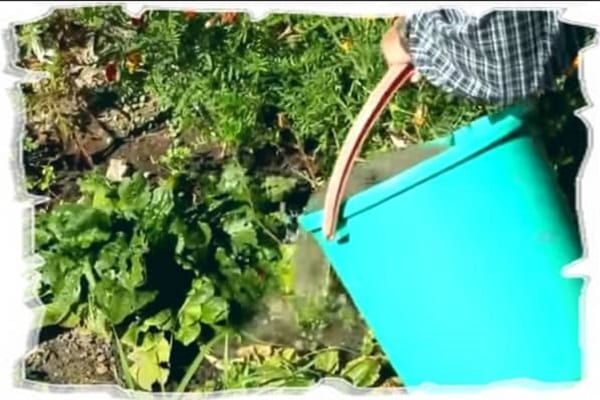
What do beets need and how to recognize fasting?
First of all, beets need basic elements: phosphorus, potassium and nitrogen. Their lack affects the crop yield. Beets use nutrients unevenly during the growing season.
Most of them are absorbed a month after germination, when the plant's root system is already sufficiently developed. At the beginning of growth, the need for nitrogen is higher, towards the end of cultivation - for potassium and phosphorus.Even on fertile soil, feeding beets during cultivation is necessary.
Sodium is needed to store carbohydrates and flavor beets. For this purpose, table salt or sodium nitrate is introduced into the soil.
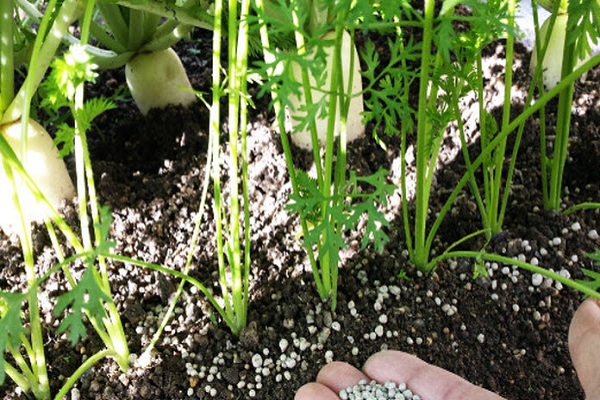
The nutritional deficiency of beets can be determined by the condition of the leaves and other organs. With a lack of potassium, yellow spots appear on the foliage. If there is not enough sodium in the soil, the tops turn red. With a lack of nitrogen, the leaves are underdeveloped. They are small and weak. With a lack of boron at the root crop, the core rots.
Fertilizers of industrial production (ammonium nitrate, superphosphate, potassium sulfate and others) or of organic origin (mullein, compost, bird droppings, infusion of nettle or other weeds with yeast) are used to compensate for the deficiency of minerals.

Root dressing for beets
For the full development of the root crop, the first feeding of plants with wood ash is carried out the next day after sowing. To do this, 2 glasses of the product are diluted in 15 liters of water, infused for 2 hours and used for watering beet beds.
After the appearance of 2-3 leaves, organic fertilizers are applied to the soil. In order to increase the sugar content, table salt or other sodium fertilizers are used as root dressing during the formation of root crops.
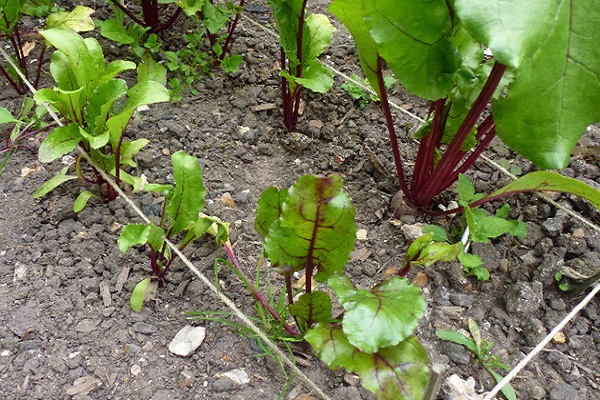
For the development of the root crop, potash and phosphate fertilizers... The first time is when 3-4 pair of leaves are formed. The second is when the top of the root crop is shown from the ground.
In addition, boric acid, infusions of weeds, lime are used as root dressing. The latter is applied once a season together with the first mineral fertilizing.
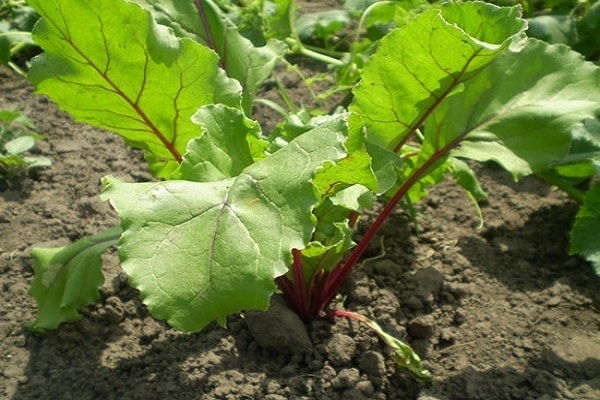
Foliar dressing of beets
Sometimes fertilizers are applied not at the root, but the foliage and soil around the bush are irrigated. Foliar feeding of beets has its advantages:
- The foliage absorbs nutrients faster than the root system.
- Elements that are not introduced at the root are absorbed more fully. The losses in this case are lower.
- Foliar dressing can be done at any stage of the plant's growing season.
- Foliar application of fertilizers is more even with minimal risk of overdose.

For irrigation, an infusion of urea is used, for which 20 g of the substance is mixed with 10 liters of water. Manganese is used to prevent putrefactive leg. It is used as irrigation with a weak pink solution of potassium permanganate 5 times per season.
You can use a solution of boric acid, table salt and other means. Irrigation is carried out in the evening or on a cloudy day to prevent burning of foliage.
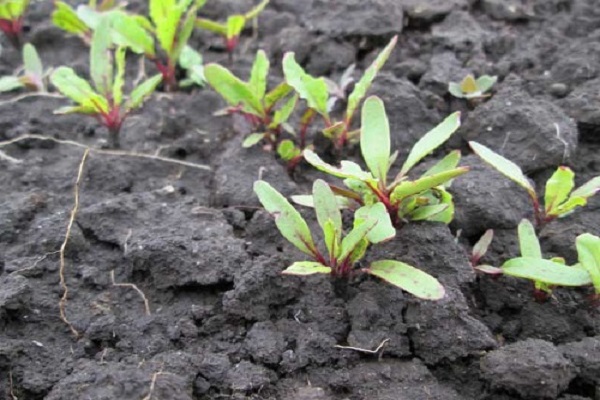
Watering beets with salt water
External changes indicate which fertilizers are needed. So, reddening of beet tops indicates that it lacks sodium. To protect the foliage from yellowing and premature wilting, as well as the sweetness of root crops, the culture is watered with a solution of sodium chloride.
Sodium enrichment of the soil is harmful to most plants, except for beets. Table salt has a positive effect on its vegetation. In addition, salt water protects the crop from some pests.

To obtain sweet beets, it is watered with a solution of rock salt, since the intake of sodium contributes to the accumulation of carbohydrates in the tissues of root crops. Prepare a solution based on 1 m² - 1 tbsp. l. salt per 10 liters of water. The salt is first completely dissolved in a small amount of hot water, and then the concentrate is diluted to the required volume.
The saline solution can also be used for foliar feeding. To this end, it is sprayed onto the beet leaves on both sides and the soil around the garden. This method of fertilization additionally protects against summer flies, caterpillars and slugs, but in this case, a more concentrated solution is used - 1 tbsp. salt per 10 liters of water.
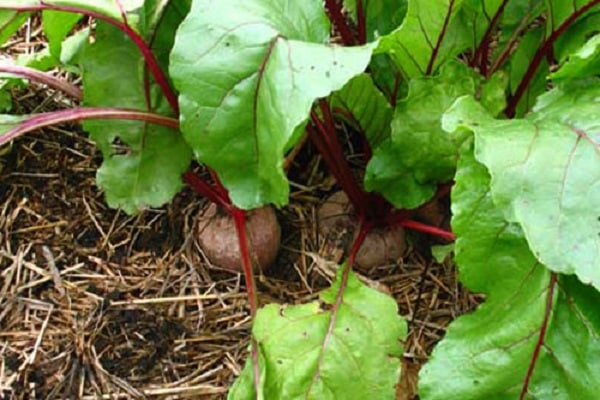
Feeding the culture with salt water is carried out three times:
- After the appearance of 6-8 leaves.
- At the stage of root crop formation or after the top of the vegetable emerges from the ground.
- 2-3 weeks after the second feeding or a month before harvest.
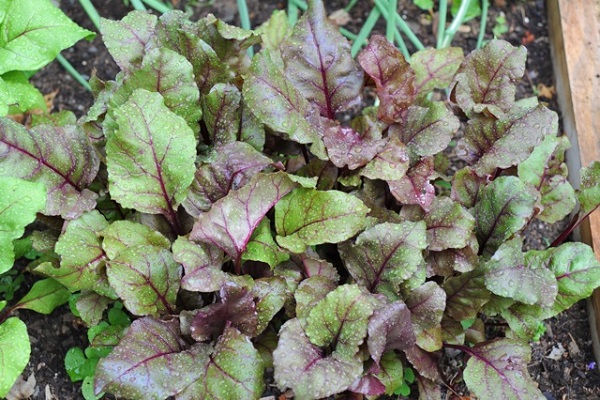
Beet feeding with boric acid
Boron normalizes the synthesis of nitrogen-containing substances in plant tissues, participates in metabolism, is necessary for the synthesis of chlorophyll. The amount of a trace element in the soil affects the yield, keeping quality of root crops and the content of sugars in them, the general resistance of plants to adverse environmental conditions.
The simplest, cheapest and most accessible boron compound is boric acid, therefore it is introduced into many complex fertilizers. The substance is a colorless crystal that dissolves easily in water. With a shortage of boron in beets, mycosis develops - phomosis, in which the core of the root crop rots. On the cut, the affected root crop is dark brown or black, and brown spots with black dots form on the leaves.
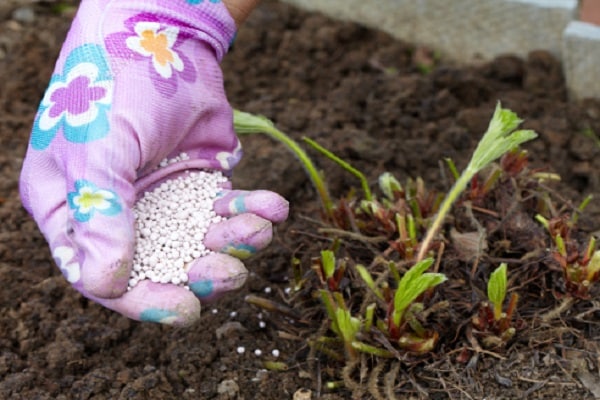
The use of the substance is most successful on sod-podzolic, gray, brown forest soil and light chernozems. It is necessary to introduce boric acid into soils enriched with carbonates, as well as dark colored soils, waterlogged and liming.
Beet boron is necessary throughout the growing season. The culture belongs to the category of plants with a high demand for this element. At the same time, with an overabundance of boron, yellowing and drying of the lower leaves are possible.
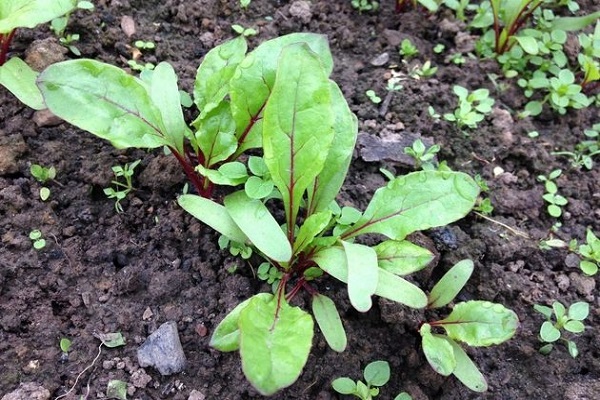
The substance is used at different stages of the growing season. To stimulate seed germination, 200 mg of boric acid is dissolved in 1 liter of hot water. In the prepared solution, the seeds are soaked for 12 hours. This solution can be used to water the rows before sowing at the rate of 1 liter per 1 m². Then the row is loosened and sown. You can spray the seeds with a dry mixture of acid and talc, mixed in a 1: 1 ratio.
Root top dressing of beets with boric acid is used with a confirmed lack of boron in the soil, on sod-podzolic and peat and sandy soils. In this case, the plants are first watered with clean water so as not to burn the roots, and then with a 0.02% boric acid solution.

At the stage of appearance of 4-5 leaves and during the formation of root crops, the crop is fed outside the roots. It is sprayed with a 0.05-0.06% acid solution together with other trace elements.
How to feed beets with chicken droppings
After the formation of 2-3 leaves, it becomes necessary to apply organic fertilizers. For this purpose, a solution of mullein, rabbit feces or rotted chicken droppings is used.
For this purpose, 2 parts of the selected organic fertilizers are diluted with 8 parts of water, infused for 2 hours, filtered so that organic particles do not burn the roots and leaves of the plant and water the garden. After that, the beets need to be watered with clean water and mulched. Such feeding is carried out only once during the growing season of the crop.
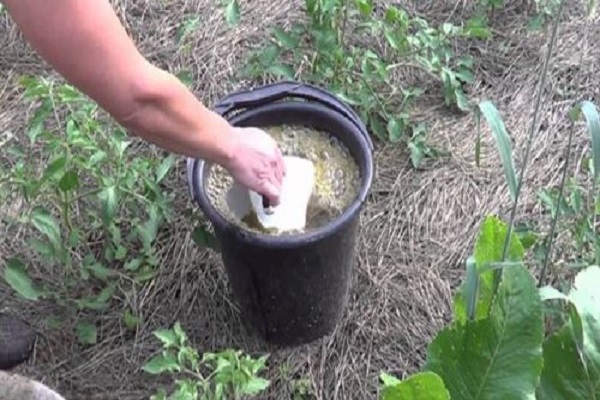
Chicken manure is considered the most effective and concentrated of all organic fertilizers. In addition to organic matter, it contains 2% phosphorus, 2.5% nitrogen and 1% potassium. Do not use fresh droppings for feeding. The high concentration of urea and uric acid in it can cause burns to leaves and roots.
Chicken droppings can be introduced into the soil in the fall, under autumn plowing or digging a plot. To prepare liquid fertilizer from fresh droppings, it is diluted in water at the rate of 1.5 kg per 10 liters of water and left to ferment for 7-10 days. The mixture is then used as a mother liquor.

Beet feeding with potassium
One of the essential elements for normal growth and development of beets is potassium. If there is an insufficient amount of it in the soil, the foliage of the plant becomes covered with yellow spots. Beets receive different amounts of nitrogen, potassium and phosphorus from the soil: 4, 6.5 and 1.6 kg, respectively. Hence we can conclude that in potash fertilizers the plant needs the most.
Potassium promotes the active growth of the culture, increases its resistance to disease, drought and temperature extremes, accelerates the formation, maturation and safety of root crops, and participates in the process of photosynthesis.
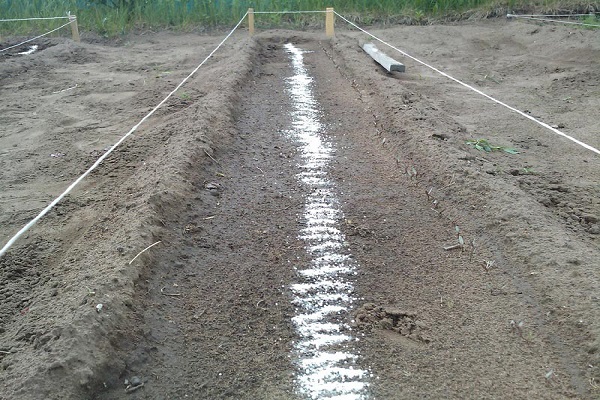
Introducing the necessary elements when growing beets produce on schedule. Thus, the first application of nitrogen, potassium and phosphorus is carried out at the stage of 4-6 pairs of leaves, when the plant begins to actively grow green mass. Often the first feeding comes in May. The second time is fertilized only with phosphorus and potassium. The second top dressing is applied when the growth and formation of root crops begins.
With a confirmed potassium deficiency in the soil, they are fertilized with a crop every 10-15 days at the rate of 70 g of potassium chloride per 10 liters of water. 300 ml of solution is poured under each plant. You can additionally add 1 glass of lime to the mixture. In August, if the tops begin to turn yellow too early, potassium chloride can be added to the soil at the rate of 30-40 g / m².
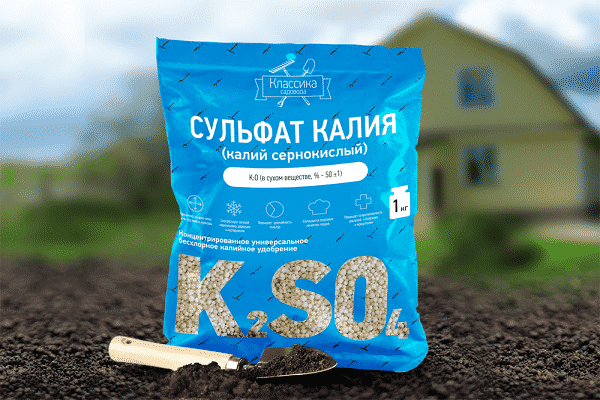
Fertilize beets with nettles
Application of dressings can be replaced by watering with nettle solution. This plant is a storehouse of useful substances: phosphorus, potassium, calcium, magnesium, vitamins, organic acids and many others, necessary for the full development of beets. Vitamin K, which is found in nettle, is actively involved in the process of photosynthesis.
Crops fertilized with nettle infusion are distinguished by active growth and rapid ripening of fruits, good resistance to adverse environmental conditions. The advantage of organic nutrients is that they are easily absorbed by plants.
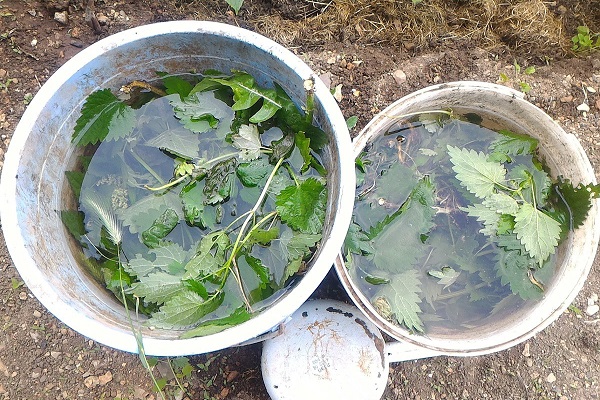
In addition, nettle preparations repel pests. The most effective is the introduction of plant dressings in the phase of active growth and the growth of green mass by the crop.
A nutritious infusion is prepared from nettle. To do this, collect the green mass before the seeds appear. Only healthy plants are used. Fill two-thirds of the container with nettle, fill it with water and infuse for 2 weeks, stirring regularly.
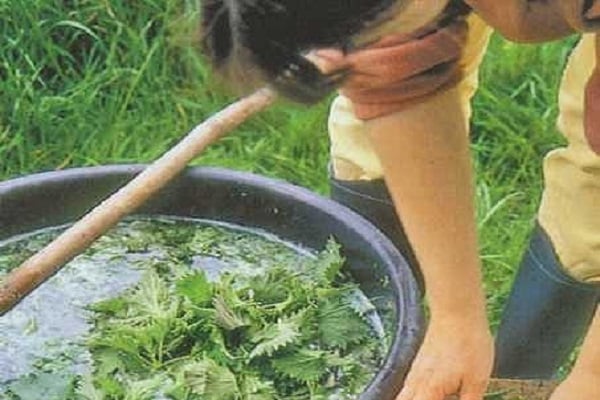
Yeast can be added to the infusion to force fermentation. Fermentation is accelerated in the open sun. Additional introduction of other weeds (comfrey, burdock and others) will further increase the concentration of nutrients in the solution. The finished product will darken and stop foaming. The solution is diluted with water in a ratio of 1:10. A diluted 1:20 infusion can be used for spraying beets as a foliar feeding once a month.
The culture is watered with infusion once a week at the rate of 0.5 liters for each plant. Then the vegetables are additionally irrigated with clean water. Nettle-based dressings are best done on a cloudy day, after rain or combined with the next watering.

Root fertilization of beets with folk remedies
For the cultivation of organic, environmentally friendly products, folk remedies are used for feeding beets. They, like industrial fertilizers, are applied twice a season. The first time - after the appearance of permanent leaves, and the second - after the closing of the leaves of neighboring seedlings.
For a root vegetable to be large, red and juicy, beets need alkaline soils that are rich in calcium. For this, in the fall, such proven folk remedies as ash, dolomite, fish-bone meal or ground eggshells are introduced into the soil at the rate of 2-3 glasses per 1 m². Ash is natural phosphorus-potassium fertilizer... To compensate for the calcium deficiency, ground chalk can be added to the soil.


